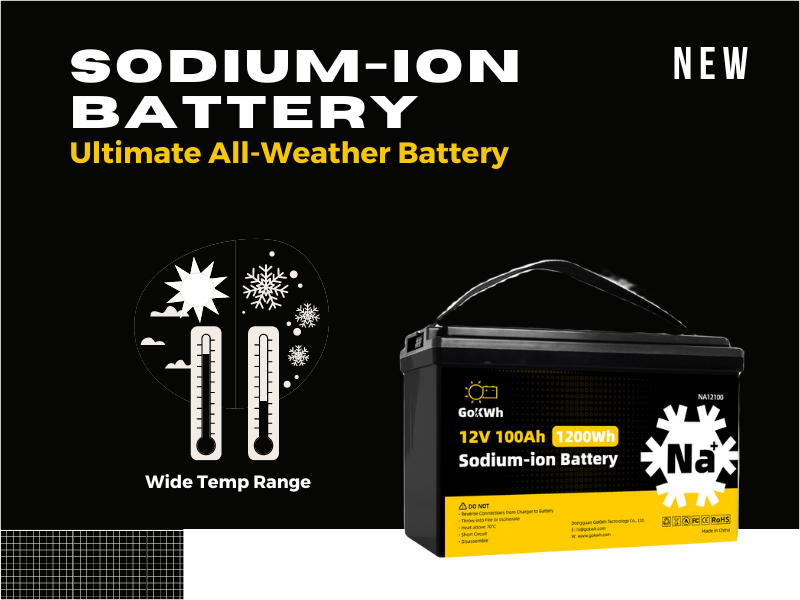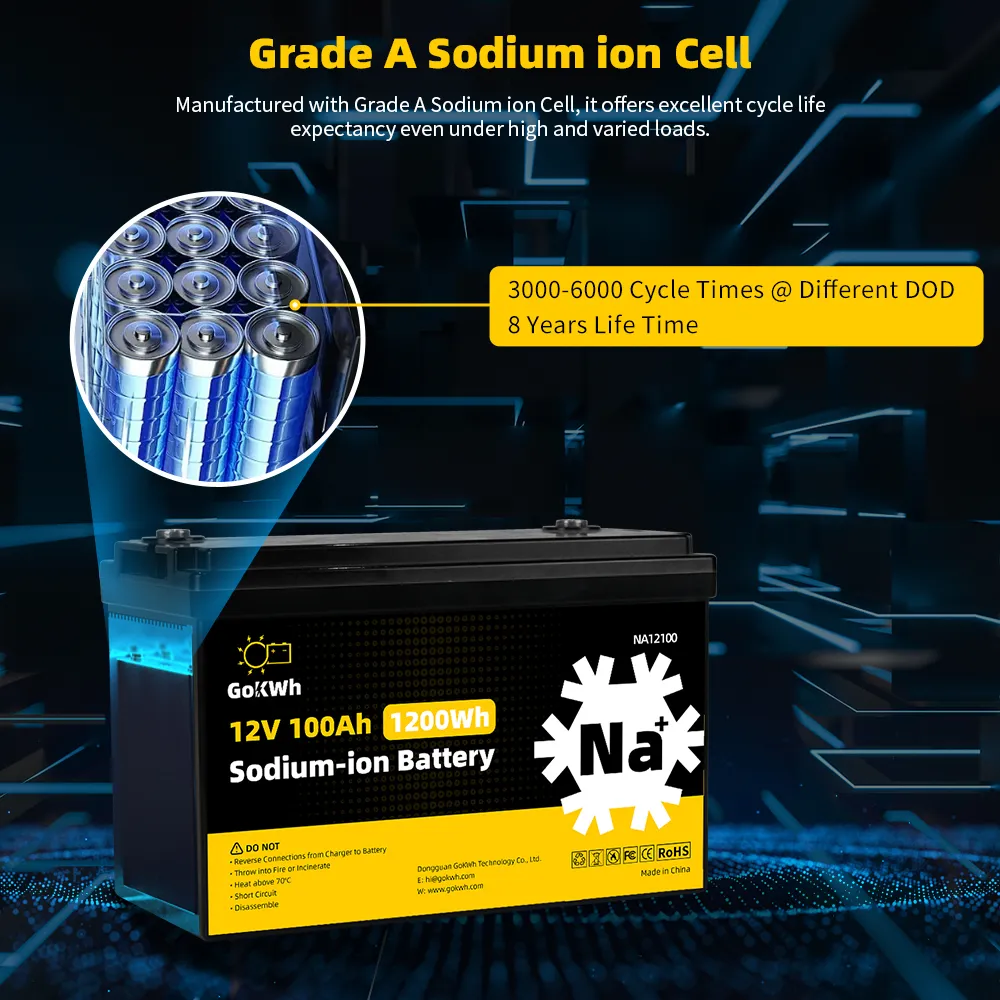e-mail us: hi@gokwh.com

What is A Sodium ion Battery? Everything You Need to Know
Sodium-ion batteries (SIBs) are a burgeoning technology in the realm of energy storage, offering a promising alternative to the widely used lithium-ion batteries (LIBs). As the world seeks more sustainable and cost-efficient ways to power our devices and vehicles, SIBs are emerging as a viable contender. Here’s everything you need to know about this innovative energy storage solution.
Composition and Working Principles
Sodium-ion batteries operate on a similar principle to LIBs, involving the movement of sodium ions (Na+) between the anode and cathode during charging and discharging cycles. The key difference lies in the element used for ion transport; while LIBs use lithium ions (Li+), SIBs utilize sodium ions (Na+). This switch is significant because sodium is more abundant and less expensive than lithium, making SIBs a more sustainable and potentially more cost-effective option.
The anode of a Sodium ion battery is typically made from materials such as hard carbon or sodium alloying compounds, which can accommodate the larger sodium ions. The cathode, on the other hand, is composed of various sodium-based compounds, such as sodium manganese oxide or sodium iron phosphate. The electrolyte in SIBs is also tailored to facilitate the movement of sodium ions, often using sodium salts dissolved in a solvent.
Advantages of Sodium-ion Batteries
Abundant Raw Materials
Sodium is the seventh most abundant element in the Earth’s crust, making it a plentiful resource. This abundance translates to a more secure and potentially lower-cost supply chain compared to lithium.
Cost-Effectiveness
The raw material costs for SIBs are expected to be significantly lower than those for LIBs, due to the lower cost of sodium and the absence of expensive metals like cobalt.
Safety
SIBs can be shipped and stored in a fully discharged state, reducing the risk of fire and making them safer for transportation and storage. Additionally, they do not require the use of toxic materials like lead or cobalt.
Environmental Friendliness
The production of SIBs is expected to have a lower environmental impact, as the extraction and processing of sodium are less resource-intensive than those of lithium.
Temperature Tolerance
SIBs have shown to perform well in a wide range of temperatures, making them suitable for various applications, including those in extreme climates.
Challenges and Ongoing Research
Despite their advantages, SIBs face several challenges that researchers are actively addressing. The larger size of sodium ions compared to lithium ions leads to slower kinetics and lower energy density. This means that SIBs currently have a lower energy storage capacity per unit weight than LIBs. However, ongoing research is focused on developing new electrode materials and optimizing the battery chemistry to improve these aspects.
Applications and Future Prospects
SIBs are particularly promising for applications where cost and sustainability are paramount, such as large-scale energy storage for renewable power grids, backup power systems, and certain types of electric vehicles. As the technology matures and economies of scale are achieved, SIBs could become a more common sight in everyday energy storage solutions.
In conclusion, sodium-ion batteries represent a significant step towards more sustainable and cost-effective energy storage. While they are not yet ready to replace lithium-ion batteries across all applications, their unique advantages make them an exciting area of research and development. As the technology continues to evolve, we can expect to see SIBs play an increasingly important role in the global energy landscape.


I would like to know the specifications relative to low temperature charging vs operating temperature of the Sodium Ion battery. Thanks.
The sodium-ion batteries are indeed impressive, especially in cold conditions. From the article [What is Sodium ion Battery Cell? LiFePO4 Alternative?](https://ecoteardown.top/what-is-sodium-ion-battery-cell/), these batteries can function well from -40°C to 80°C. They maintain up to 88% capacity at -20°C, outperforming LiFePO4 batteries. While specific charging specs at low temps aren’t detailed, their design suggests efficient charging even in the cold.